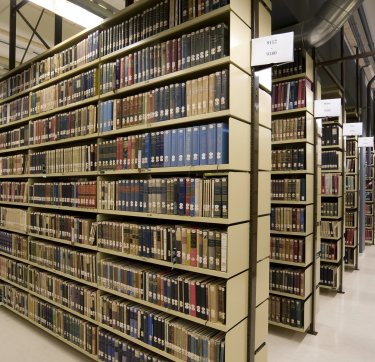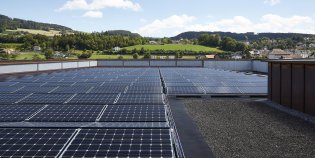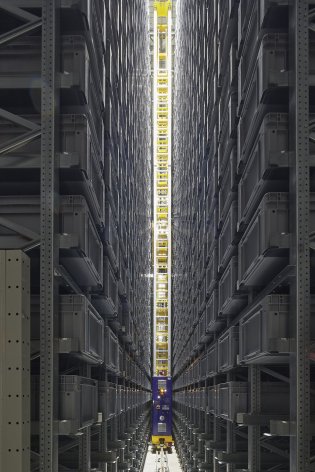The new book repository: sustainable and safe
The KB is building a new book repository on the outskirts of The Hague. It promises to be a hypermodern building, where our collection will be safe for for centuries to come. A few highlights in a row.
Safe from fire and water
In developing a new repository for the KB, our focus is the safety of the KB collection. The risk of fire is for instance reduced to almost zero, as fire needs oxygen and the storeroom is kept at low oxygen levels.
Protection against flooding and climate change has also been addressed. The collection will be placed above NAP (Amsterdam Ordnance Datum). And the building is designed to withstand rising sea levels, extreme heat and rainfall.
Sustainable: energy-neutral and electric vehicles
The new repository will be built sustainably and its use will be completely energy-neutral.
For starters, in regulating the climate, we will use very little energy. For safe and long term storage of the collection a stable climate is of the utmost importance. We will achieve this by making the building airtight. We will also insulate the construction extensively. The temperature inside the building will thereby gradually move along with the seasons outside. Moisture from outside will not be able to penetrate the repository either.
Because we will store our large collection very compactly, the books will contribute to their own climate control. Fluctuations in humidity and temperature are reduced by the enormous mass of paper. This way, we ensure that the conditions for storing the collection for a long time are optimal, without the need for energy-guzzling climate installations. An additional advantage of such a passive building solution without active climate control systems, is that the books cannot incur any water damage from leaking installations.
For the provision of energy resources, the new repository will be equipped with solar panels.
Finally: the new repository will be in the Harnaschpolder, separate from the public KB library building in the center of The Hague. In order to deliver the requested books to the KB library, we will transport them with special delivery vans. These book transportations will be conducted by electric vehicles, so they will burden the environment as little as possible.
Moving all the books: a mega operation
The KB has:
- 3.5 million books
- approximately 700,000 volumes of periodicals
- more than 100,000 bound newspapers
- more than 13,000 works in extra large format
- prints, maps, pamphlets
- many other unbound works
And new books, newspapers and magazines are added every day. We have to move this entire collection to the new repository. That is not something that can be done overnight. An entire team has already been preparing for this move for years. Even long before we knew where the new repository would be built. These colleagues make sure that the collection is clean and can continually be found in the catalogue.
We’re also using this preparatory time to check vulnerable and damaged books and protect them by using special packaging. If necessary, we conserve them. This way, we ensure that we can safely move the collection to the new repository.
Example to and for other libraries
We are building the new repository after the Swiss, Norwegian and British examples. But many national libraries are curious about how we are going about this project. They are following our progress closely and we are happy to share what we learn internationally.
Curious about the new repository?
From the inside, the new repository will resemble that of the British Library. They made a nice film about it - in English and unsubtitled. It’s good footage showing how a robotised repository works and what it looks like.
Literature
- Boersma, F., Martens, M., Ankersmit, B. & Stappers, M. 'A Robotic Storage Facility for the Dutch National Library Collections, Studies in Conservation', 2022, DOI: 10.1080/00393630.2022.2045420







